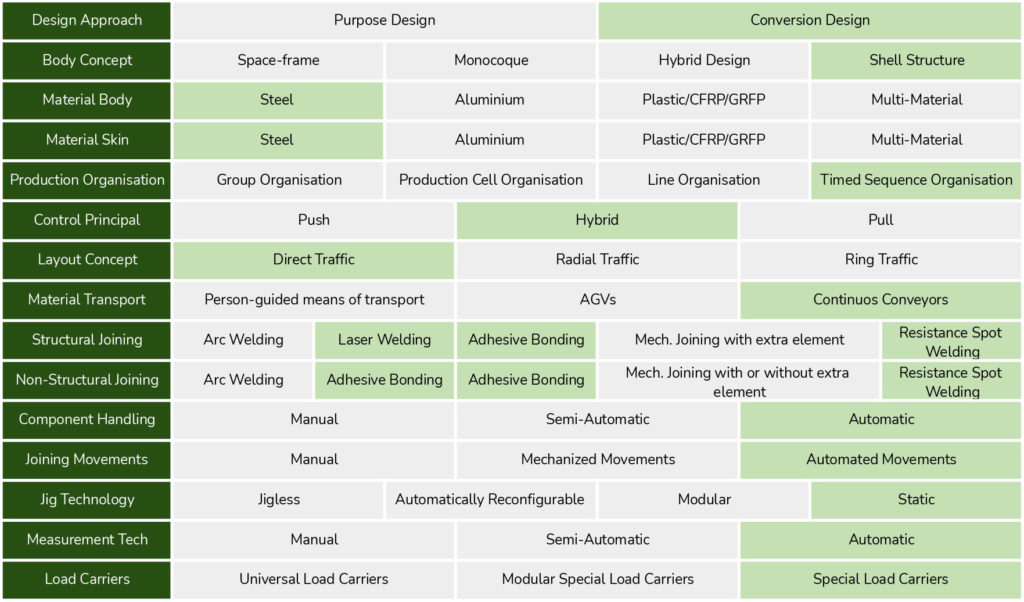Morphological Box is a Creative Thinking tool for generating complete solutions to complex problems. For this, we logically decompose the problem into several variables/factors and try to identify solutions or ideas.
Ullman’s Diagram depicted above is utilised to make design related decisions.
How to use the Morphological Box?
Step 1: Using a small team, brainstorm and identify the attributes of the system (product, process or service) you are examining. These attributes are parts, functions, properties, qualities or design elements of the system of interest.
For example:
- The attributes of a pen could be: material, retraction method, ink type, flow control, quality, colour, size, feel, weight and price.
- The attributes of a hotel would be type, style, service level, star rating, price, location, facilities.
In generating the attributes, it is crucial to define each clearly. For example, what is meant by “hotel-type”? What is meant by “hotel-style”?
Step2: Construct the Morphological Box using these attributes as column headings.
Step 3: For each attribute column, brainstorm and write down as many variations of the attribute as possible.
- If you are struggling to generate options/variations, consider changing the attribute
- If you find the same options/variation appearing in another column, consider combining the attribute columns
The table, the Morphological Box, should now show all possible variations of each attribute.
Step 4: Select one entry from each column to create a whole system concept solution. This can be done systematically (every combination!), randomly or by selecting different combinations. It is at this point the team can create truly imaginative system concepts.
Step 5: The aim is to arrive at a single practical but innovative system concept solution. It will require a mix of evaluation and improvement of the various system concepts. It is often critical, at this point, to be disciplined in the approach using decision tools like N/3, Decision Matrix or Pugh Matrix.
Car Development
For developing a new car, for example, all the relevant parameters (e.g. Design Approach, Material etc.) are noted, and as many attributes as possible are assigned to each parameter. It requires expertise and imagination, as the aim is to create something new out of something that already exists. The result, in this case, is a two-dimensional table (although a morphological box can have up to four dimensions).

The limitations of Morphological Box:
- Poorly thought through attributes. The attributes are crucial in constructing a Morphological Box. They must be relevant and clearly defined. I will typically think about customer/user requirements as the attributes.
- Not exploring possible whole system concepts. Morphological Box works, but we often do not explore the more extreme possibilities.
Since finding the parameters from experience is perceived as the most complex step, here are some more tips:
- The parameters must be logically independent of each other so that they can be combined freely.
- The parameters must apply to all conceivable solutions and not be valid for a subset of the problem.
- The parameters should have conceptual relevance and not describe insignificant details of the solution sought.
The creation time for complex morphologies can be very long and can take several days or even weeks.
Author: Piyush

